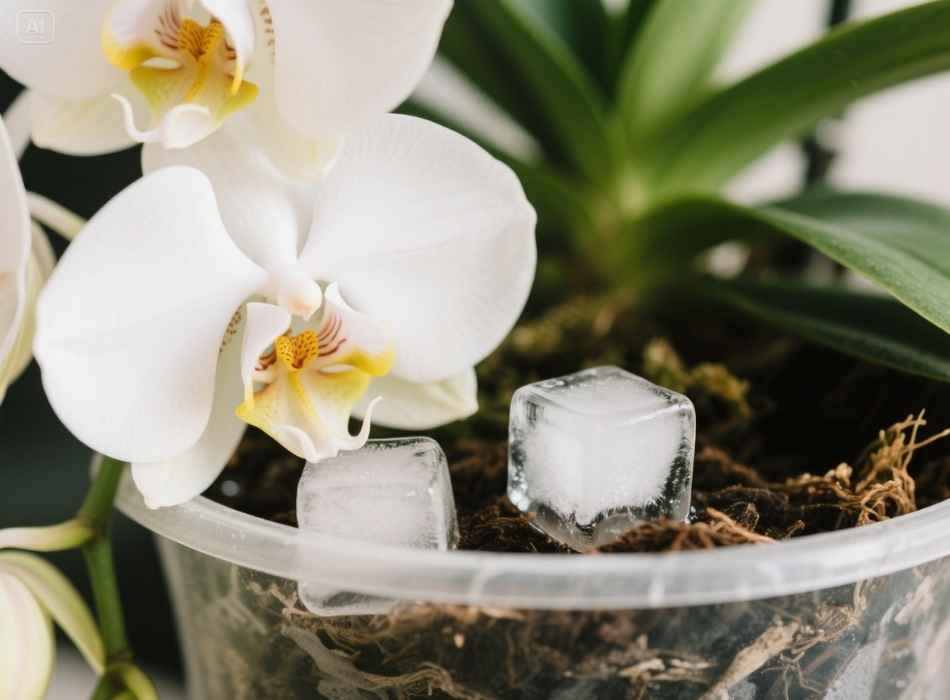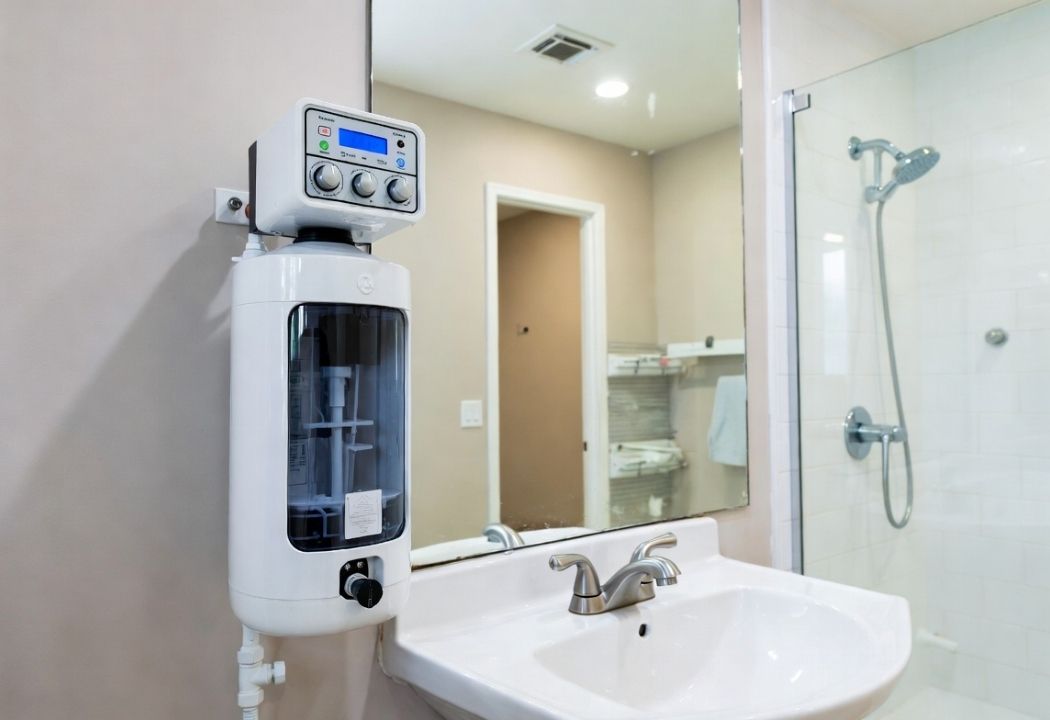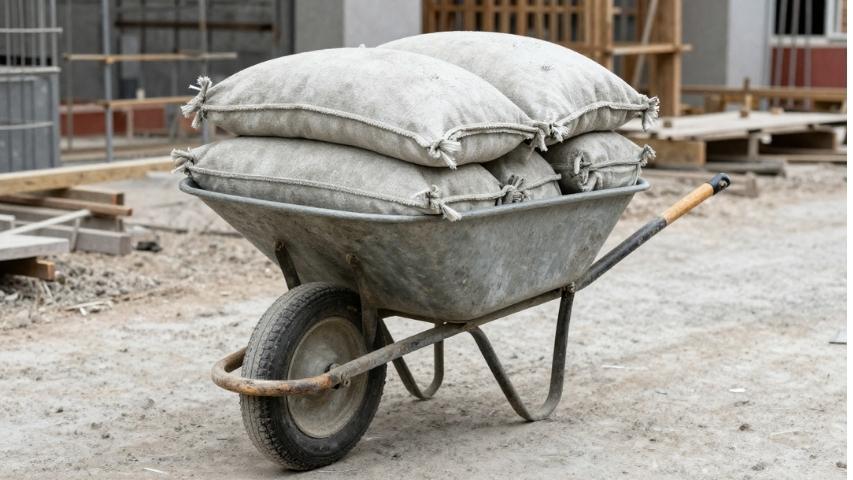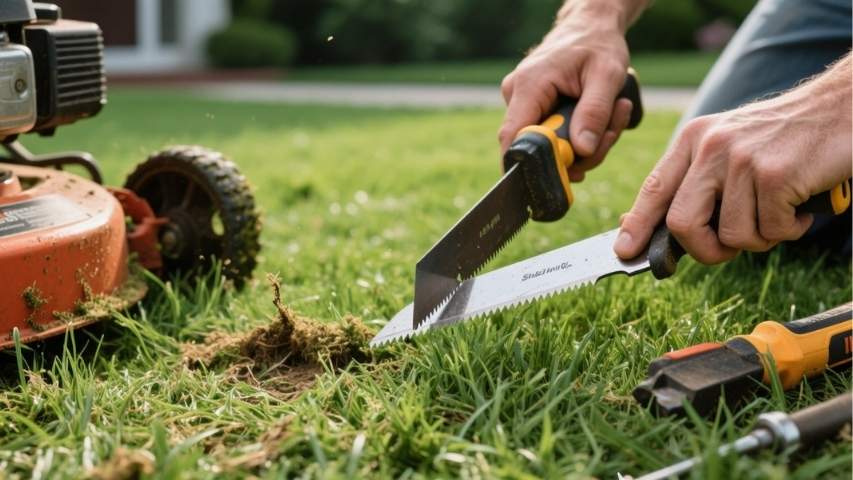Orchids are stunning, elegant plants that add a touch of sophistication to any home or garden. Known for their vibrant blooms and delicate appearance, orchids draw plant lovers from all walks of life. However, with their beauty comes a reputation for being tricky to care for. One of the most hotly debated topics among orchid enthusiasts is the idea of watering them with ice cubes.
If you’ve heard this method praised as quick and easy but are unsure if it is perfect for your orchids, you’re in the right place. This post will explore why ice cubes became such a popular watering technique. We’ll evaluate its pros and cons and clarify whether it suits it suits these exotic plants.
What’s the Idea Behind Watering Orchids with Ice Cubes?
The concept of watering orchids with ice cubes gained traction because of its sheer simplicity. The method typically involves placing one or two ice cubes on the potting media of your orchid once a week. As the ice melts slowly, it provides a gradual trickle of water, supposedly mimicking how orchids absorb moisture in their natural environments.
This method became especially popular thanks to indoor gardeners looking for a hands-off approach to orchid care. For beginners, it can feel like an easy way to avoid overwatering, one of the leading killers of orchids.
But does “easy” always translate to “good” regarding orchid care? Let’s break this down.
The Benefits of Using Ice Cubes on Orchids

To understand why some people swear by this method, let’s take a look at its potential benefits:
1. Prevents Overwatering
Overwatering is the Achilles’ heel for most orchid growers. Orchids, especially the popular Phalaenopsis species (moth orchids), are susceptible to soggy roots, leading to rot. Ice cubes deliver water incrementally as they melt, ensuring the orchid absorbs water over time rather than being drenched immediately.
2. Simple for Beginners
Ice cubes simplify watering schedules for those new to caring for orchids. Instead of guessing how much water the plant needs or risking messy spills, placing a specific number of ice cubes eliminates much of the guesswork.
3. Mimics Controlled Watering
The gradual melting of ice cubes allows water to be absorbed rhythmically, which can help prevent water from pooling around the roots. This aligns with the needs of orchids, as their roots are designed to take in moisture gently, not all at once.
4. Time-Saving Solution
For busy gardeners who care for multiple plants, watering with ice cubes offers a quick ” set it and forget it” solution. It’s also less labour-intensive compared to traditional watering methods. You only need to place the ice cubes on top of the soil and let them slowly melt. This can save time and effort, allowing gardeners to focus on other tasks while their plants receive a steady water supply.
5. Eco-Friendly Method
Using ice cubes for watering also has environmental benefits. It reduces potential water wastage from overwatering or spills, as the ice cubes will melt at a controlled rate. Additionally, this method eliminates plastic watering cans or hoses, reducing plastic waste in gardening practices.
6. Alternative for Absent Gardeners
Ice cube watering can also be helpful for those away from home frequently, as the ice cubes provide a slow and steady release of water, ensuring that your plants are not left unattended for too long without hydration. This method also eliminates the need to rely on neighbours or friends to water your plants while you are away.
7. Suitable for All Types of Plants
Ice cube watering is suitable for all types of plants, including both indoor and outdoor plants. It can be particularly beneficial for delicate or sensitive plants that require precise watering techniques, such as orchids or succulents.
While these points may seem convincing, it is essential to dig deeper. Orchids aren’t your average houseplant; they have particular care requirements that some claim the ice cube method fails to meet.
The Downsides of Using Ice Cubes to Water Orchids

On the flip side, many experienced orchid growers and botanical experts discourage using ice cubes. Here’sHere’s why:
1. Orchids Aren’t Designed for Cold Water
Orchids are tropical plants, typically growing in warm, humid environments. Their roots are adapted to absorb slightly warm or room-temperature water. Exposing them to the freezing temperatures of ice cubes can cause stress or even damage the roots over time.
2. Potential for Frost Damage
If the ice cube comes into direct contact with the orchid’s orchid’s roots or leaves, it could cause frostburn. While this might not be visible immediately, repeated freezing exposure could weaken the plant’s health.
3. Too Little Water for Some Orchids
Not all orchids have the exact water needs. Depending on factors like size, species, and environmental conditions (such as humidity levels in your home), some ice cubes may not supply your plant with adequate hydration. This can lead to dehydration and inhibit blooming.
4. Natural Habitat Doesn’t Coincide
The slow trickle of water created by melting ice doesn’t accurately mimic how orchids absorb water in their natural habitat. Tropical rainforests provide consistent warmth and gentle moisture—not cold droplets.
5. Lack of Uniformity
If ice cubes are unevenly placed or the orchid is in a pot with poor drainage, some areas of the potting media may remain dry while others turn overly damp. This uneven water distribution isn’t ideal and can confuse the plant’s root system.
- Orchids thrive in consistent and uniform environments, so it’s essential to moisten the potting media. This can be achieved by careful placement of ice cubes or by using a watering technique that ensures all parts of the potting media are evenly watered.
Additionally, orchids should be repotted every 1-2 years to prevent uneven distribution of nutrients and moisture in the potting media. RepottingRepotting also allows for inspection and removal of any root rot, which can also contribute to a lack of uniformity in water absorption.
6. Possible Alternatives
While using ice cubes as a watering method may seem convenient, other alternatives provide more consistent and effective results. One alternative is to water orchids through the bottom of the pot, also known as the “soak and drain” method. This involves placing the pot in water for 10-15 minutes and thoroughly hydrating all roots before draining excess water.
Another alternative is to use a watering wand or spray bottle to gently water the orchid from above, ensuring that all parts of the potting media are evenly moistened. This method mimics natural rain showers and can be especially beneficial for orchids that prefer high humidity.
Is Watering with Ice Cubes Ever Okay?

Despite the controversy, there are certain circumstances where ice cubes might not be entirely harmful. For example:
- Low-Risk Orchids: For hardy species like Phalaenopsis orchids grown in mass-market pots, ice cubes are unlikely to cause significant damage if used occasionally.
- Quick Fix: If you’re away from home or don’t have access to your usual watering tools, using ice cubes once or twice in an emergency is better than letting the plant dry out entirely. Just make sure not to make this a regular practice.
- Prevent Over-watering: Using ice cubes is beneficial for beginners or those who over-water their plants. It provides a measured amount of water and prevents the soil from getting saturated.
However, it is worth noting that these situations should be the exception, not the rule.
A Better Way to Water Orchids
For optimal orchid care, consider these alternatives to the ice cube method:
1. Use Room-Temperature Water
Instead of ice cubes, use lukewarm water. Pour it gently over the potting mix to ensure the orchid gets even hydration without shocking the roots.

2. Water Weekly
Most orchids need to be watered about once a week. Check the potting media; if it feels dry to the touch, it’s time to water. If it’s still damp, wait another day or two.
3. Use a Sink or Basin
For the best results, set your orchid’s orchid’s pot in a sink or basin and gently run tepid water through the potting mix for 20–30 seconds. Allow the pot to drain fully before placing it back in its display location.
4. Invest in a Humidity Tray
Orchids thrive in humidity. If you’re concerned about hydration, set your orchid on a humidity tray filled with water and pebbles. This helps maintain a consistent, orchid-friendly environment.
5. Observe the Root Health
Orchid roots are a great indicator of their hydration needs. Healthy roots are plump and green. If you notice shrivelled, silver roots, your plant might require a humidity boost or slightly more frequent watering.
6. Consider Fertilization
In their natural habitat, orchids derive nutrients from the surrounding environment. Therefore, mimicking this in your home by fertilizing regularly is essential. Use a balanced fertilizer at half-strength every other time you water your orchid.
7. RepotRepot When Necessary
As your orchid grows and matures, it may outgrow its current pot. Signs that it’s time for a report include roots poking out of drainage holes or visibly cramped roots inside the pot. RepottingRepotting is also an excellent opportunity to refresh the potting mix and remove any dead or decaying roots.
8. Keep an Eye Out for Pests
Pests, such as scale, mealybugs, and spider mites, can be a common issue for orchids. These pests can weaken the plant and lead to diseases if left unchecked. Inspect your orchid regularly for any signs of pests and treat them promptly with natural or organic methods.
9. Be Mindful of Temperature and Humidity
Orchids are tropical plants that thrive in warm and humid conditions. The ideal temperature range for most orchids is between 65-75°F (18-24°C). They also enjoy higher humidity levels, so using a humidifier or placing your orchid near other plants can help create a humid environment.
Be mindful of sudden temperature changes and drafts, as these can cause stress to your orchid. Avoid placing your orchid near air conditioning units or heating vents.
10. Provide Proper Air Circulation
While orchids enjoy humidity, they also need proper air circulation to prevent mould and bacteria growth. Good air circulation allows for better gas exchange and helps prevent stagnant air, which can lead to plant diseases.
To promote good airflow around your orchid, avoid placing it in an enclosed space or too close to other plants. You can also gently move the leaves and stems of your orchid every so often to improve ventilation.
11. Fertilize Your Orchid
Like any other plant, orchids need nutrients to grow strong and healthy. While they can thrive in low-nutrient environments, regular Fertilization will give them an extra boost.
Using a balanced fertilizer with equal amounts of nitrogen, phosphorus, and potassium is recommended. You can also use specialized fertilizers specifically formulated for orchids. Be sure to follow the instructions on the label for proper dilution and frequency of application.
If your orchid leaves turn yellow or limp, it may be a sign of nutrient deficiency. In this case, the frequency of Fertilization should be increased, or a higher nitrogen fertilizer should be switched.
The Verdict
While watering orchids with ice cubes is often touted as a convenient method, it doesn’t align with the natural needs of these tropical beauties. The freezing temperatures and inconsistent water supply can do more harm than good over time. Orchids thrive best when watered thoughtfully with lukewarm water while considering their unique care requirements.
Set your orchids up for success by ditching the ice cubes and employing methods that mimic their natural habitat. Your patience and care will be rewarded with healthy plants and vibrant blooms.











